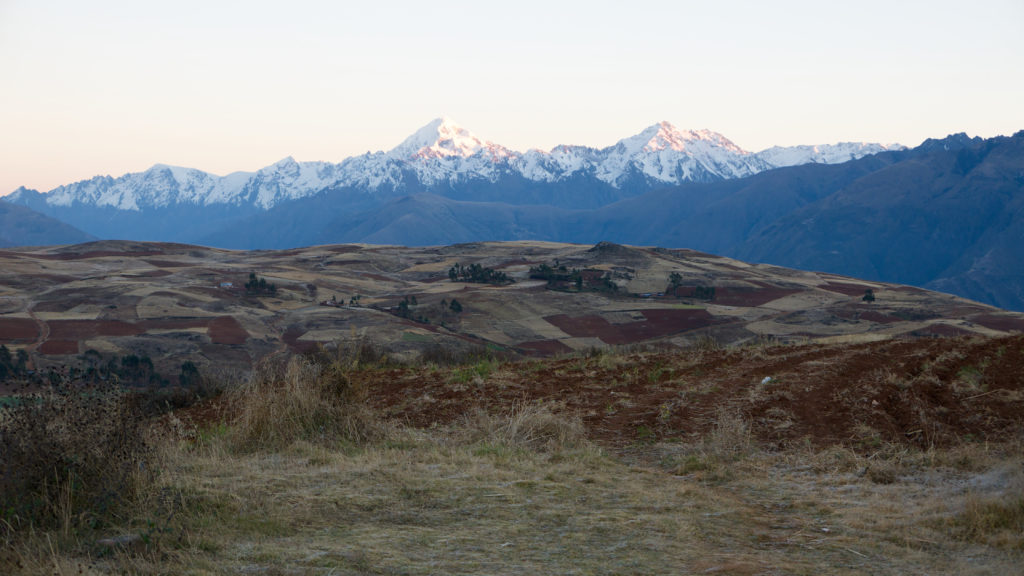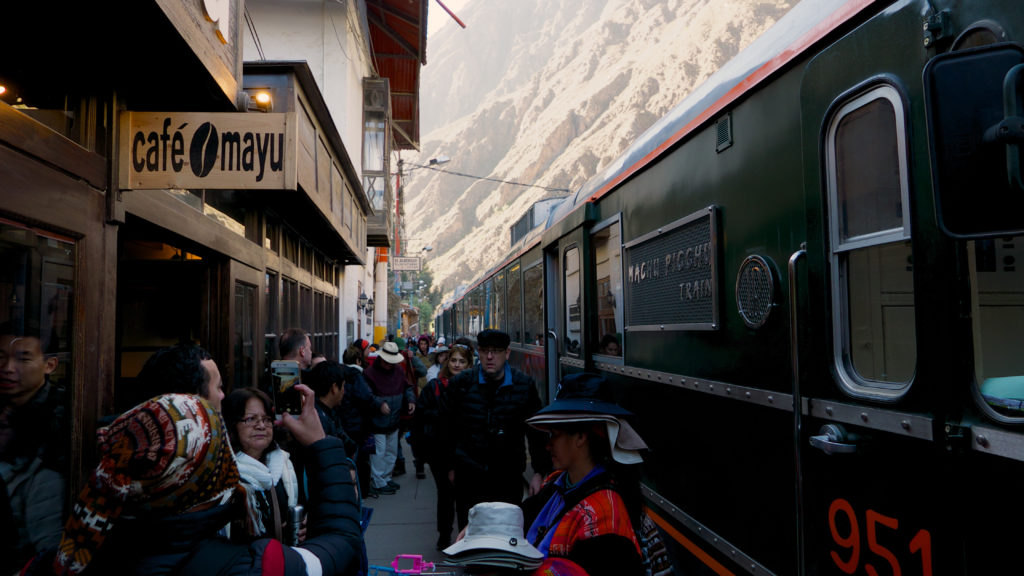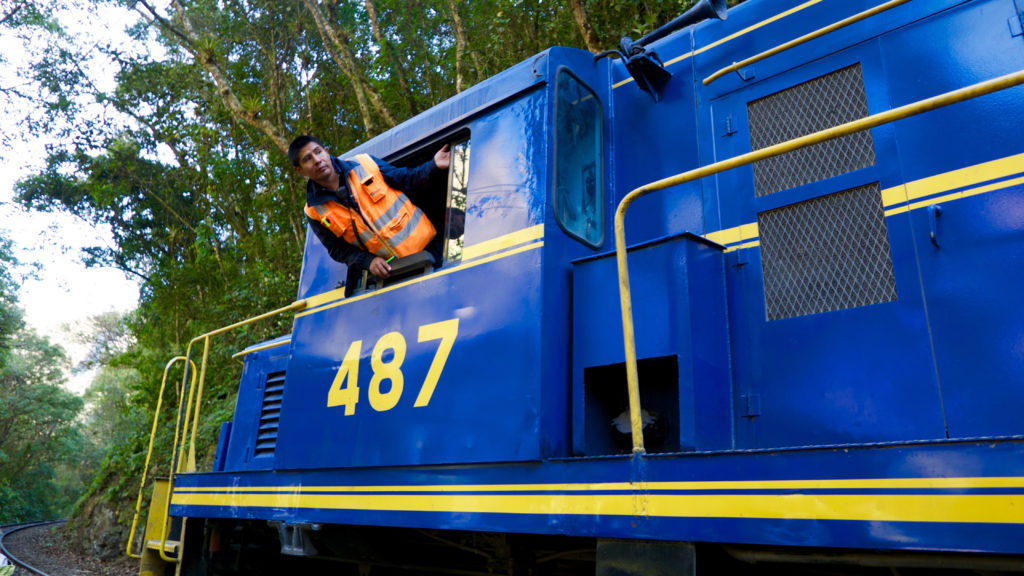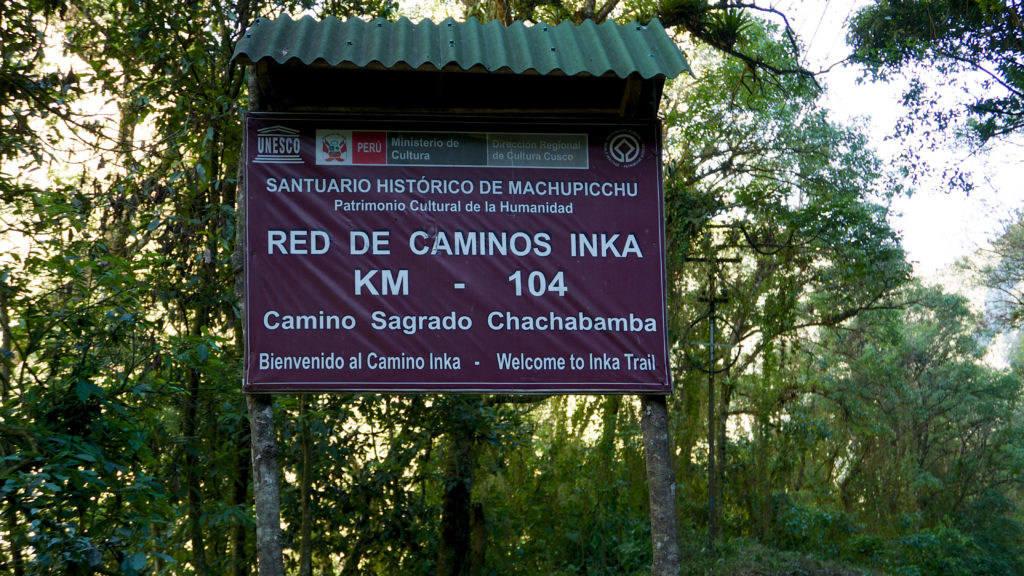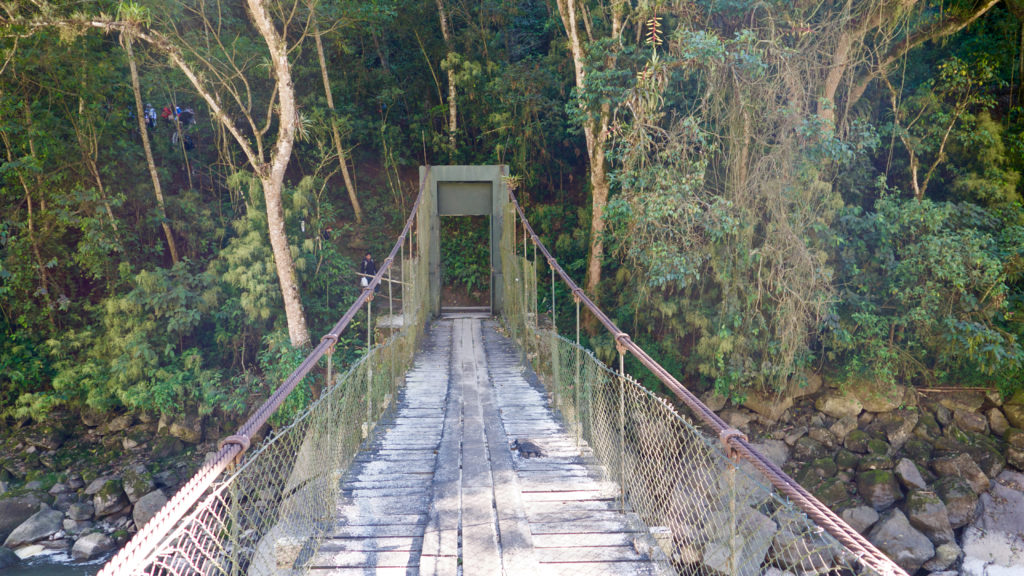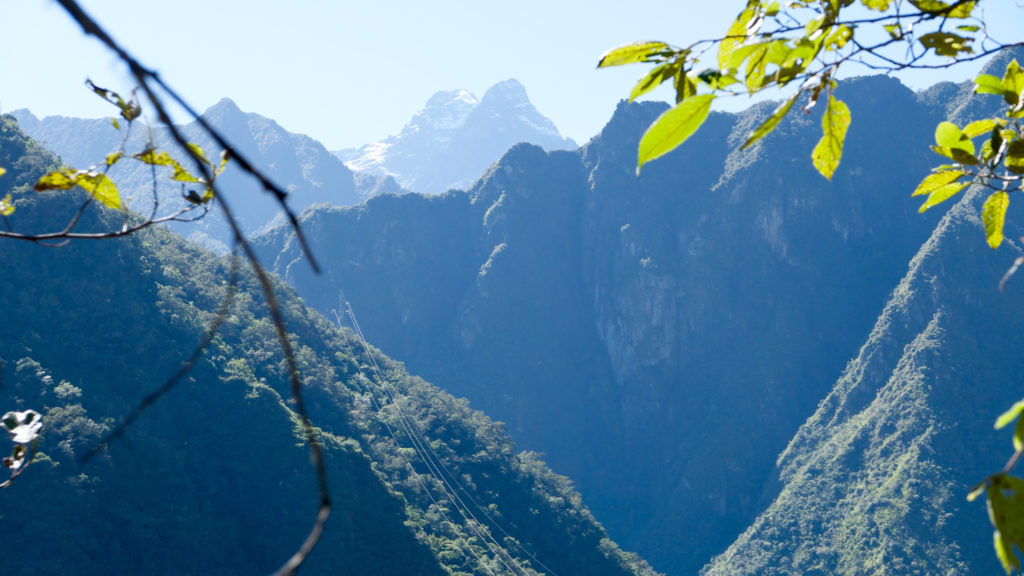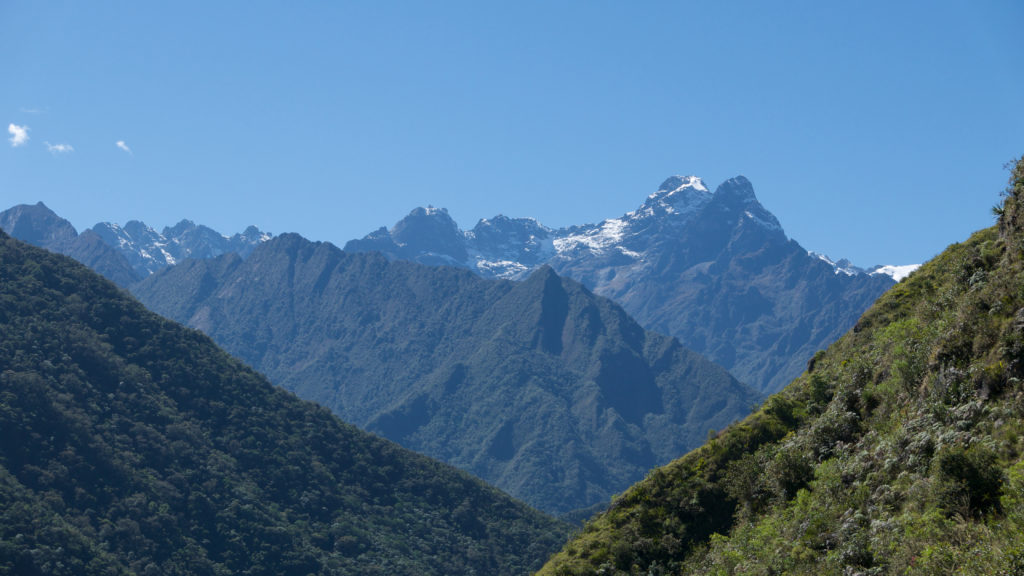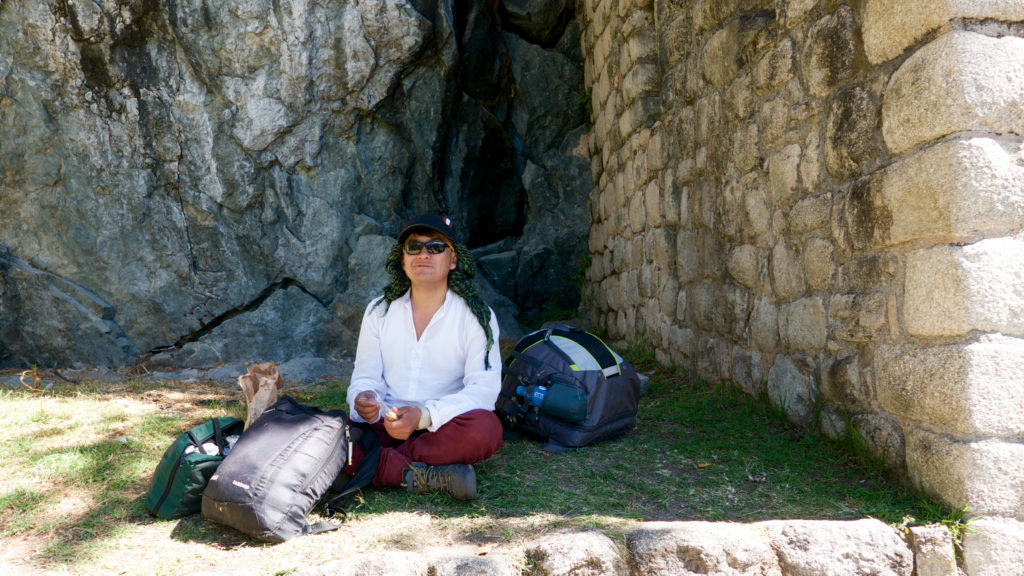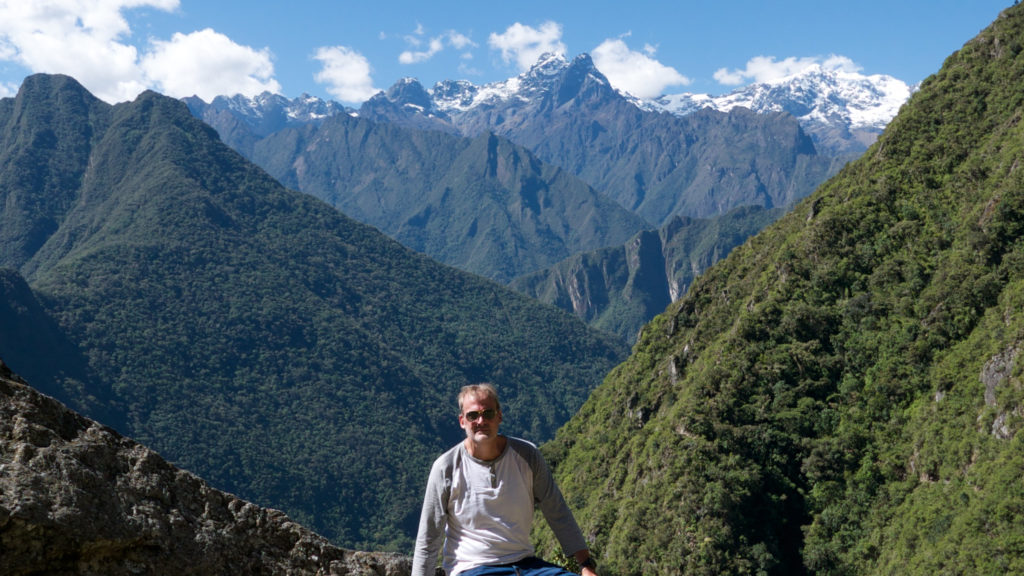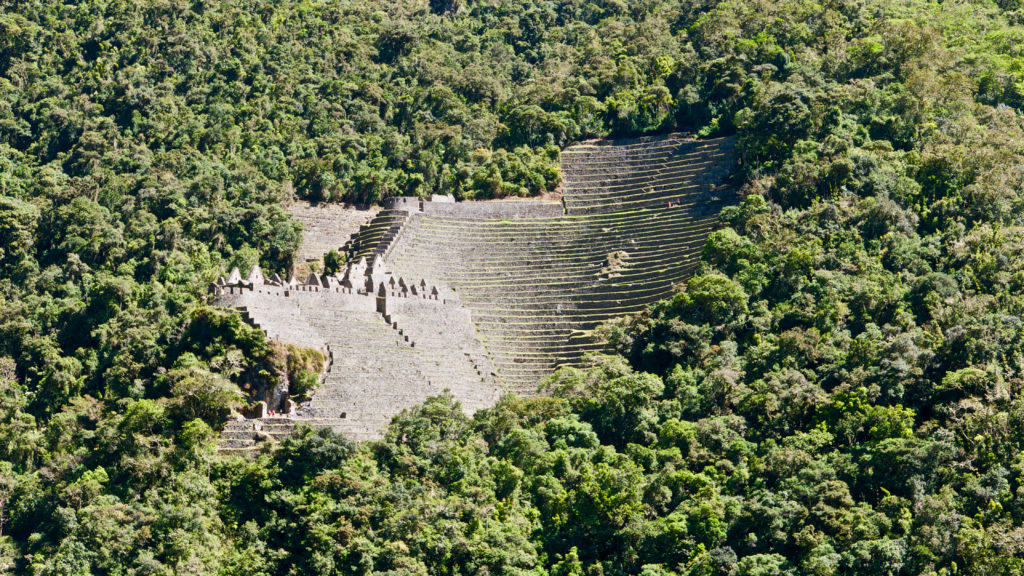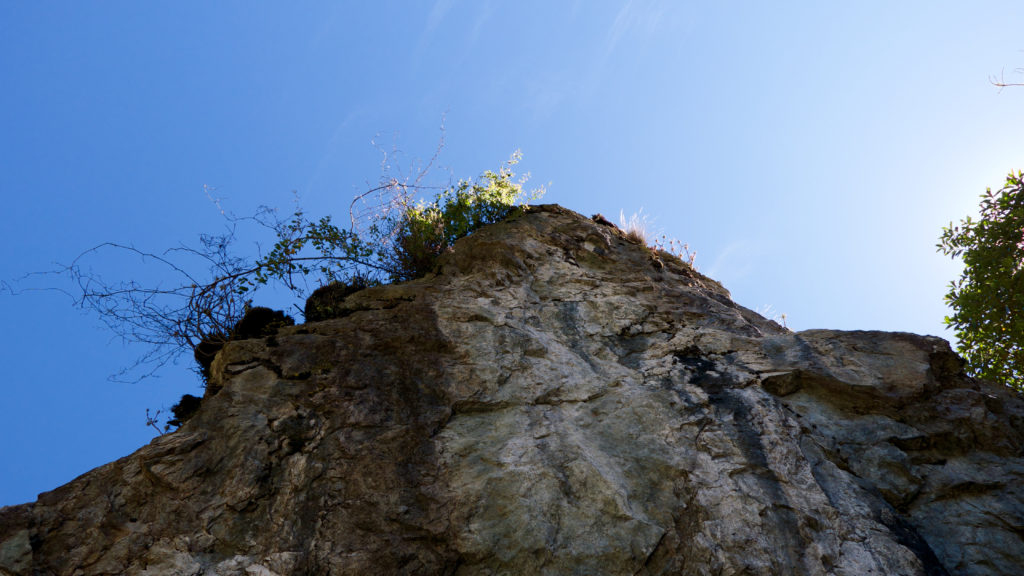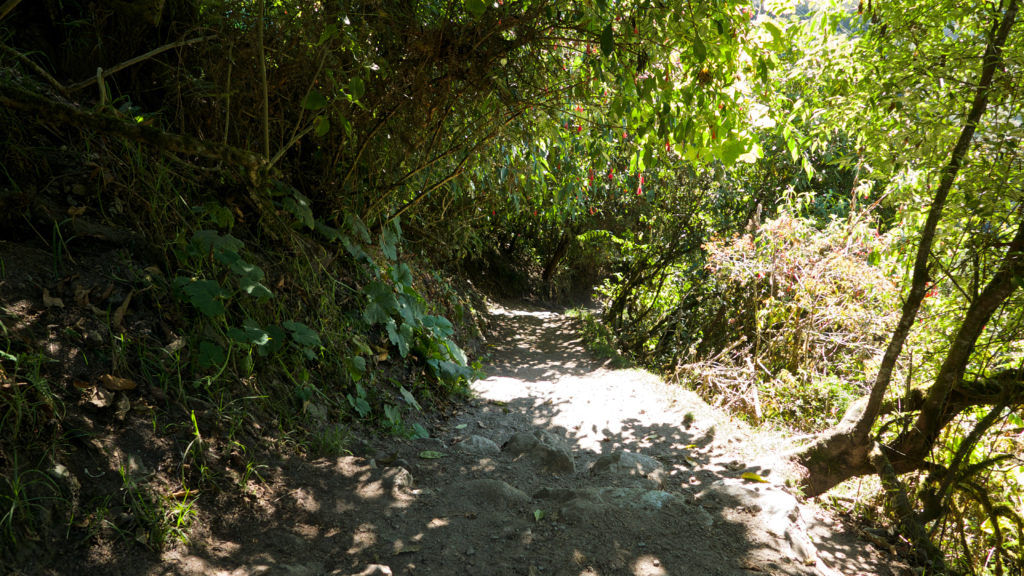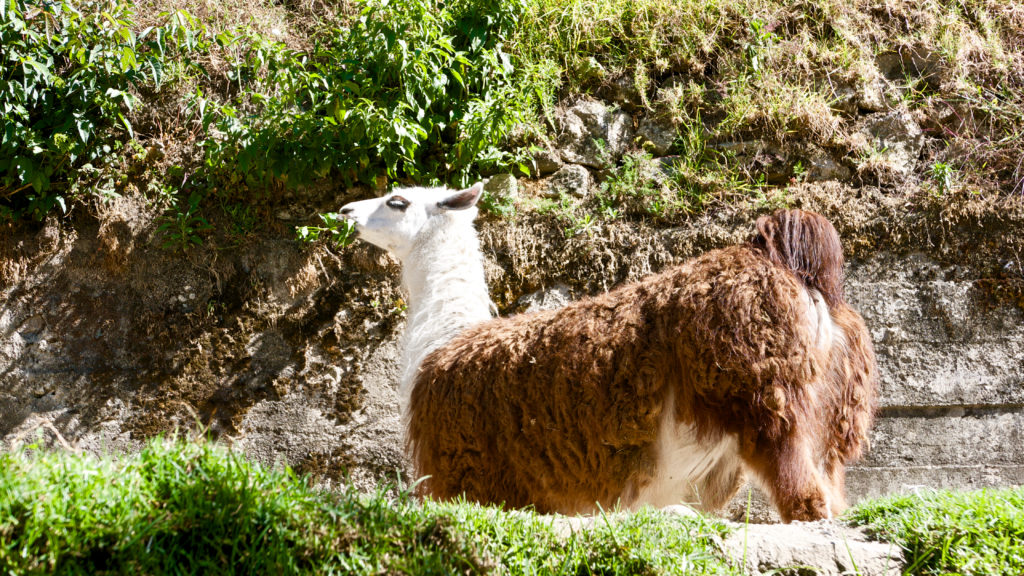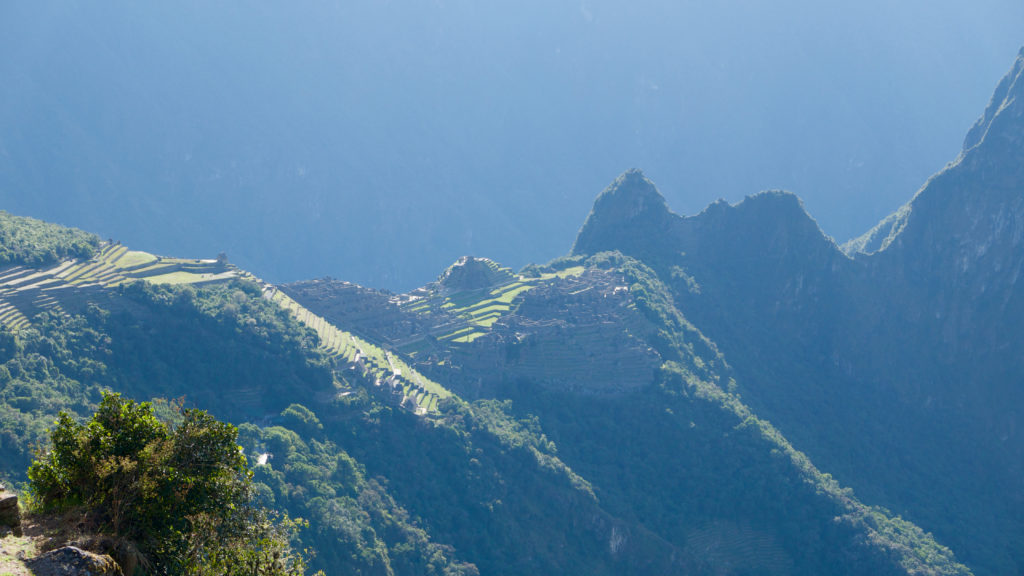Yorkee came to pick me up well before the sun rose on July 1. I stashed most of my luggage at the Encantada Hotel and took only a small day pack with me. We drove 90 minutes northwest out of Cusco through the blasted brown Andean countryside. As the sun rose, it lit up the snow-topped mountains in the distance. Some of their peaks topped out at 20,000 feet.
It was cold, hardscrabble scenery. Just when it looked like we were about to drive straight into the side of a mountain, the road curved and began to descend into a valley.
I looked down at the town of Urubamba. Smoke drifted from wood fires that were presumably keeping the citizenry warm. A wispy ceiling of smoke covered the town. The mountains were so large that I could see the shadows creeping along their slopes as the sun rose.
At Ollantaytambo, the scene at the train station was cheerfully chaotic. Hundreds of people, many of whom didn’t speak Spanish, tried to inveigle their way onto the proper train.
I said good-bye to Yorkee and boarded the train. I wasn’t sure what to expect of Peru Rail. Though the carriage looked nondescript on the outside, inside I found a comfortable, contemporary environment that would put Amtrak to shame. We pulled out of the station right on time at 7:45 am.
The train ran through valleys, over small streams, through tunnels, and upward into the mountains. After a half-hour ride, we arrived at kilometer 104 and stopped. Kilometer 104 isn’t a station — it’s simply a marker that coincides with the head of the one-day segment of the Inca Trail.
There I met up with Ismael, my guide: the man who was to become my teacher and coach. I showed my permits to a guard at the gate—the number of people who get access to the trail each day is strictly limited to 500—and we were on our way.
The first 100 meters took me over a suspension footbridge. I thought that was cool, but soon realized that that the planks of that bridge were the only smooth, flat surface I would traverse for the next 16 kilometers.
I’d tried to prepare for this trek. I didn’t want to be That Guy Who Was Carried to Machu Picchu on the Back of a Llama. In the nine weeks prior to my departure, I worked out almost every day and shed eleven pounds. I ran the stairs up to my 11th floor apartment. I hefted free weights. I took long walks. I planked. But it was not enough — not enough of what I really needed, which was sustained intense aerobic activity in a thin-oxygen environment.
I also didn’t have the right shoes; my old Merrills had become oddly uncomfortable for me in recent months and I’d meant to buy a new pair but kept putting it off. I wound up hiking in well-padded but flat-soled FILA athletic shoes that gave my ankles no support whatsoever. I’d dressed for seriously cold weather, but once again, the intense UV radiation kept me warmer than I wanted to be. I stripped down to a t-shirt and regretted all the weight and bulk of the useless heavy clothes in my day pack. Such were my mistakes.
I was quickly brought up against the inadequacy of my training and my failure to adjust to the thin air. I had to stop every 100 meters or so to catch my breath. Each stone on the trail was canted at a different angle, so the mere act of walking required both constant vigilance and the unaccustomed stress to the leg muscles and joints.
We stopped at Wiñay Wayna, a restored Incan ruin whose name means “forever young” in Quechua. I wondered: did the ancient Inca people have to pay royalties to Bob Dylan to use the name? The dozens of terraces here were used to grow crops in mountainous terrain, just as they are in Asia. The sheer amount of human labor that must have been involved in building, maintaining, and farming these terraces stunned me.
After about 12 kilometers, my right knee and hip began to let me know they were not happy with the situation. I carried a lunch with me, but had no appetite. I downed three liters of water along the way and was parched for the last quarter of the route.
We stopped again at a campsite that was being used by people who had taken a more leisurely approach to the Inca Trail. They had llamas there, presumably to use as pack animals.
Driving us forward was the knowledge that the last bus from Machu Picchu left at 5:30. If we missed that, it was unclear how we could get to Aguas Calientes. I was fairly sure we could find a way, but I was determined not to need to.
We finally came through the Sun Gate at Intipunku. Down below us, partially obscured by the high mountain glare from the western sun, was Machu Picchu in all its glory.
The trail was pretty much downhill from there, but that did my knee and hip no good. I gimped down to the bus with all of seven minutes to spare.
I privately celebrated the achievement. Eight years ago, I celebrated turning 50 by taking on the biggest physical challenge of my life: a weeklong bicycle tour through southwestern Colorado they called Ride the Rockies. That remains, overall, the most intense physical undertaking of my life. But on a single-day basis, hiking the Inca Trail was more difficult than anything the Rockies put in my way. And more rewarding, too.
